How much do you know about kombucha? Could it really be the next big thing in drinks? Jarr’s Adam Vanni believes for a certain consumer it most certainly already is.
I discovered something weird and wonderful. You see, I’ve been drinking kombucha since 2008, after first being introduced to the fiendishly funky fermented tea by a friend after a yoga class. I’m from Los Angeles, where the vast majority of weird and wonderful health trends are born. And, as it just so happens, this is where kombucha, at least as we understand it in the modern context, first became a buzz. It was never my dream to start a kombucha brand: I just loved the stuff and wanted to share it with as many people as possible.
It’s sweet, it’s sour, and it’s definitely pretty weird – especially when you have it for the first time. Kombucha is also quite polarising and something you either love or hate – but rarely in between.
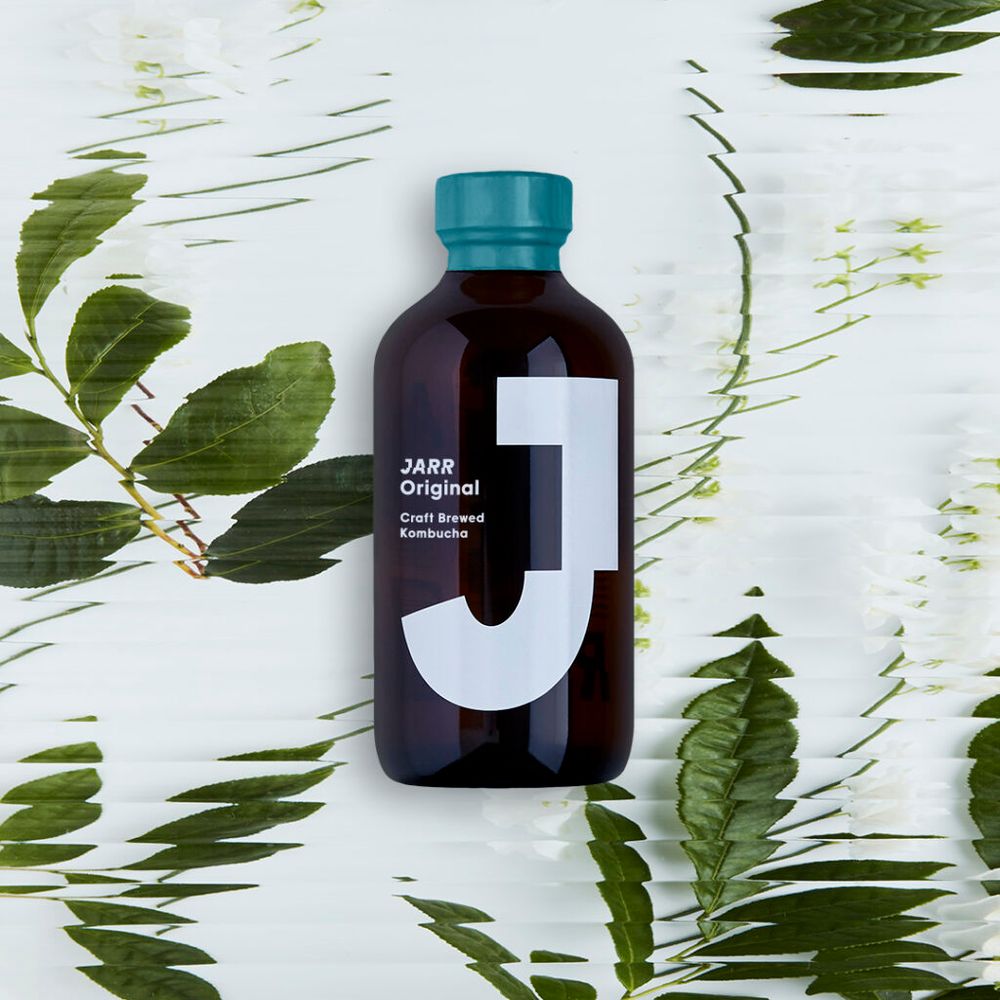
Where it all started with the original recipe for JARR Kombucha
When we started JARR, very few people were actually interested in kombucha, let alone actually enjoyed the kombucha we were making – yes, it tasted pretty bad at first!
Our very first review came from Time Out London, which said: “‘Jarr specialises in kombucha, a sour drink of fermented tea popular in Australia and some nutty pockets of the US. There it’s known for its sour tang and (unsubstantiated) health-giving properties, which we overhear a fellow customer spouting to her poor, long-suffering friend. Here, it’s like drinking gone-off vinegar. Staff confess they haven’t quite nailed their brew yet. You’re best off sticking with Crate beer on tap while the folk at Jarr work on their Kombucha chemistry …we just don’t think that scene needs fermented tea. Ever.” Eeek!
Lesson: The story is the way: From Zero to Hero – well, Harrods
In 2015 I was 27 years old and living in Los Angeles with my parents. I was broke after a year of backpacking across Asia and South America and was working odd jobs (as a receptionist in a law firm and a music therapist for children with developmental disabilities) to save some money before figuring out what the next step was. I was in the midst of the classic millennial quarter life crisis.
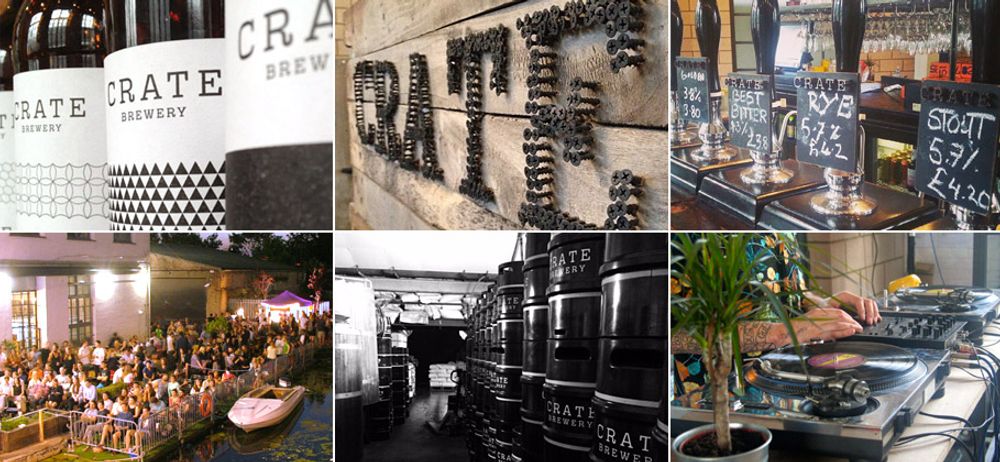
Jarr kombucha is brewed in partnership with the team at Crate Brewery in Hackney Wick. Picture thanks to Eebria
In January of 2015, I got a message from some friends of mine who lived in London and ran a successful craft beer brewery there called Crate. They were in New Zealand on holiday and were about to fly back to London, with stopover in LA. Could they stay with me and my parents for a few days? Yes, of course.
When they arrived at the house a week later, the very first thing I did was open up the fridge and ask if anybody wanted a kombucha. Coincidentally, they had just been introduced to kombucha while in Auckland and absolutely loved the stuff.
So, sat around the kitchen table, drinking kombucha, my friend Jess jokingly suggested I move over to London and we all start a kombucha brewery together. I didn’t really have too much going on at the time, so that’s exactly what I did. Two weeks later I had a flight booked and two months after that I arrived in London and we began experimenting on our very first batches of booch. Keep in mind, none of us had ever brewed kombucha before, let alone had any idea how to do it on a commercial scale.
A long period of trial and error commenced, and 11 months later we were on the shelves of Harrods.
Lesson: Get angry, and then actually do something about it: And hope to find some competition.
One of the main reasons we started Jarr was because we were all frustrated with the fact that in 2015, London had close to zero adult non-alcoholic options in its bars, hotels and restaurants. In fact, going to the pub and not drinking alcohol was actually kind of laughable for most people. There was no Seedlip, no craft soft drinks (including kombucha), and only the Germans were brewing non-alcoholic beer, of which Beck’s Blue was the frontrunner (thanks, but no thanks).
If you were teetotal, or just didn’t want to drink, the best you might find at a fancy gastro pub would be a Fentiman’s ginger beer; but more often than not all that would be on offer was J20 or a luminescent pint of lime and soda (of which I must admit I am actually a fan).
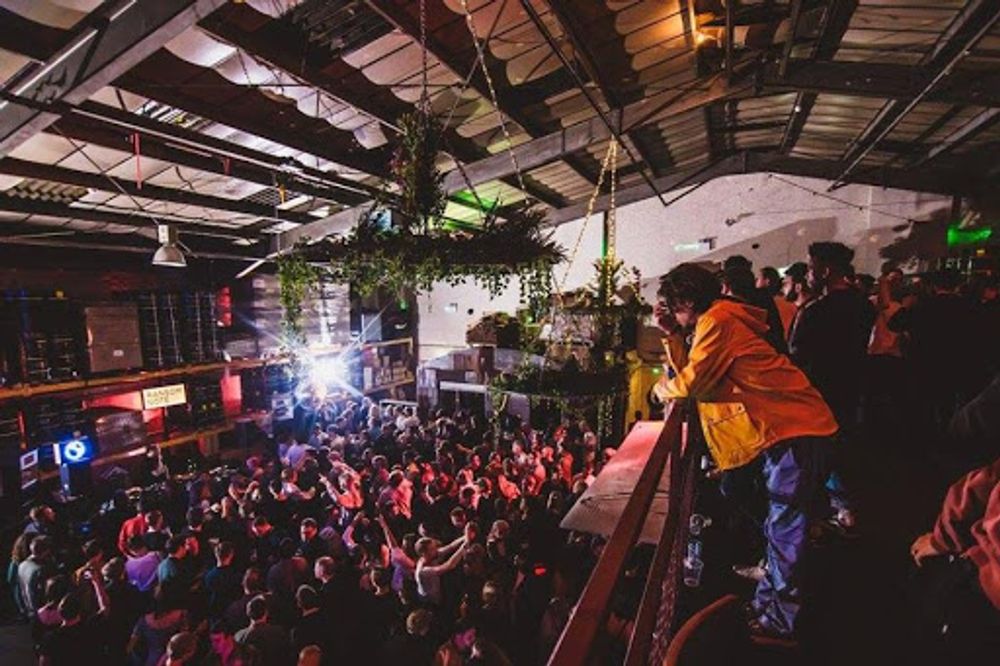
DJ’s, craft beer, street food and the Jarr Bar. Bringing kombucha to East London at the Mick’s Garage in Hackney Wick
To prove that kombucha could work as a legitimate alcohol alternative, in November 2015, we opened a kombucha taproom and cocktail bar called Jarr Bar. It was built inside an old car garage called Mick’s Garage in Hackney Wick and its warehouse also doubled as a storage space for Crate Brewery. It was here we first offered kombucha on tap – the first in Europe actually, and in cocktails alongside draught beer and cider.
This was all from a chipboard shipping container we built inside the warehouse. We brought in some DJ’s, and East London’s Berber & Q opened a pop up restaurant called Shuk Shuk. Soon enough, Mick’s Garage became a well-known East London destination.
Fast forward five years, and the no & lo-alcohol market is booming, and brands like Seedlip have been scooped up by Diageo. Craft no & low options are aplenty in every East London pub and there are 50 different kombucha brands in the UK alone. You can even find kombucha in Fuller’s and Greene King pubs across the country.
Lesson: Don’t be afraid to go against the grain…and avoid geometric patterns.
Not only did we see an opportunity to introduce kombucha as a great alcohol alternative, but we also saw an opportunity to reimagine the kombucha space. In LA, kombucha was really only found in organic shops and cafes and at premium supermarkets like Whole Foods. Many of the most popular brands were spiritually inspired and a few even had flower-of-life and mandala-like geometric patterns on the bottles, immediately alienating a large segment of the population.
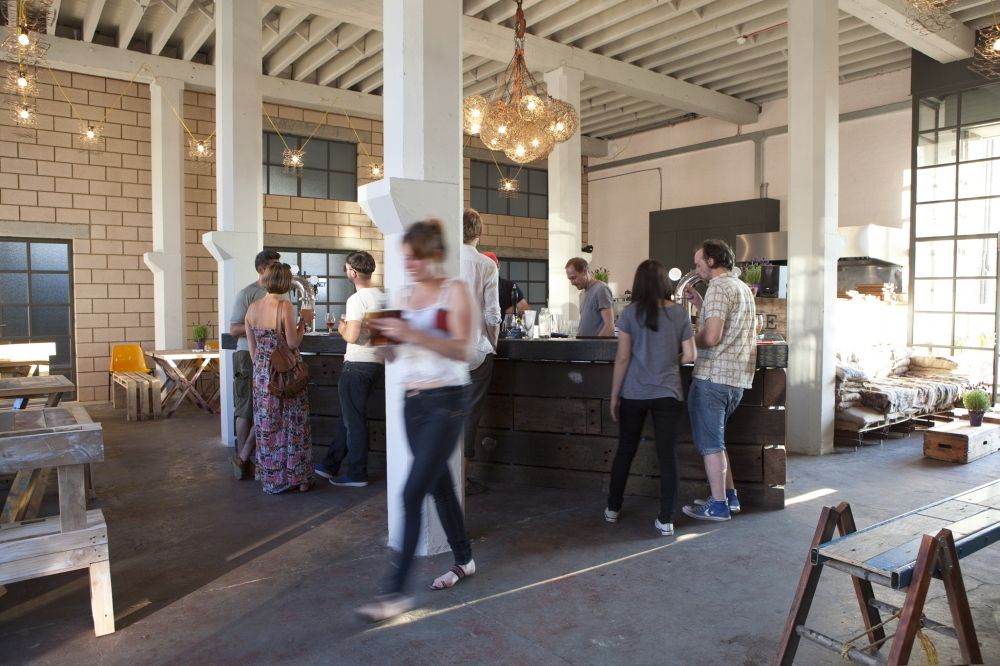
The success of the Jarr bar in Hackney Wick shows there is a real demand for kombucha in all its various guises
We immediately saw an opportunity to speak to an entirely different audience. Why did kombucha have to be a drink, which only your vegan friends knew about? Why was it something your yoga teacher brewed in his kitchen and a bit too eagerly shared with everyone after class? We wanted to create a kombucha that we really wanted to drink, unapologetically sour and complex, a brand we could connect with and which reflected who we were – fun, open, honest and no Bull S…, since you ask. Yes, brewing kombucha in East London in a converted car garage whilst DJs played house music probably meant we were hipsters – but don’t hipsters deserve to live a balanced lifestyle too?
Our design perspective took inspiration from Scandinavian minimalism and used Aesop as a case study – with its natural ingredients and paired back, clean branding. Really, it was all about applying the concept that less is more. The product itself was made with only four ingredients, so the brand should surely reflect that pure simplicity holistically.
This simple decision to brand our product immediately caught the attention of the Harrods buyer and soon our kombucha was on the shelves of its Food Halls. Because the concept of kombucha was so new to people, the bottle had to reflect that uniqueness and really stand out. From there, we soon gained listings in Soho House, Selfridges, Harvey Nichols, Whole Foods Market and Planet Organic.
Lesson: Link the skills that pay the bills. It paid in Friends!
Starting a business is as much about the team as it is about the actual product or service. Thankfully, my co-founders at Crate brewery and I all had very different strengths and interests. I love communicating, so I immediately took on the role of the brand storyteller, heading up the sales side of things and taking charge of all the marketing and social media.
(A short introduction to Jarr kombucha)
My friend Tom [Seaton] is a numbers whizz and created the financial structure, which allowed the crazy idea to actually become a profitable business venture. Jess [Seaton] was a production expert, well versed in beer equipment, brewing, packaging and everything in between, so she organised and led us through the brewery build, sourced all of the kit we needed and figured out how to actually make the kombucha on a commercial scale. Finally, Neil [Hinchley] rounded things off nicely, acting as the organisational liaison between all of us in addition to tackling all of the legal aspects of starting, maintaining and growing a business.
Before starting Jarr, we didn’t plan to take on these roles; we somehow just fell into them naturally. There are many things to be said about starting a business with your friends and, if you’ve done it before, you know what I’m talking about. The level of openness, honesty and communication can be amazing, but it’s often difficult to not get overly emotional and take things personally. If you are up to the challenge though, your levels of humility, self-awareness and ability to compromise – whilst keeping in mind the bigger picture of what you’re all trying to accomplish – can deepen and grow immensely.
Lesson: Don’t be sour about sharing. The JARR Business Model
Sure, identifying a niche in the market, starting a business and building a brand is a wonderful and exciting experience; but when you’re brewing, bottling packaging, selling and marketing your product all in-house, you encounter loads of issues. When we started Jarr in 2015, the UK was experiencing its first ‘wellness wave,’ with non-dairy milks, vegan everything, coconut water, cold pressed juice etc. all gaining traction.
What we soon realised was that none of these brands were actually making their own products. Most of them came up with a concept, hired a recipe development company, found a contract producer and boom – they had national listings in all of the big off-trade retailers. Don’t get me wrong, I have nothing but love for these brands; many of them are good friends and I think this approach is a brilliant way of building a successful business, but we were watching this from afar thinking…damn, we’ve gone into the wrong business. Maybe we should have made granola-bars?
(How Jarr Kombucha is brewed…)
Kombucha is really easy to brew at home, but it’s incredibly difficult to produce on a commercial scale. When we first started, very few people were willing to share how to scale up successfully. We contacted dozens of our favourite US kombucha brands asking for guidance and support and 99% of them never got back to us. The ones that did reply asked for money to help. As a result, to this day we openly share our brewing knowledge to anyone that reaches out – free of charge.
One of the main reasons it’s so difficult to scale up a kombucha brew is that the driving force behind the fermentation is called a SCOBY – a ‘symbiotic culture of bacteria and yeast’ that changes and adapts itself, based on its conditions. We found that the kombucha we brewed in the summer tasted different from the stuff we brewed in the winter simply because of changes in temperature. In addition, because you are fermenting tea and sugar with bacteria and yeast, alcohol is naturally produced as a byproduct. The whole point is to create a complex alcohol alternative, so we had to devise methods to keep the alcohol levels below 0.5%, about the same as a non-alcoholic beer.
This was not easy, to say the least, but we finally figured it out: for all you science nerds out there, it involves consistent, concentrated flows of oxygen into the liquid. We had to become incredibly well-versed in microbiology, the process of fermentation in all forms, and eventually hired people that were a hell of a lot smarter than us. That’s an important piece of advice. Always hire people smarter than you. Trust me, it’s worth it.
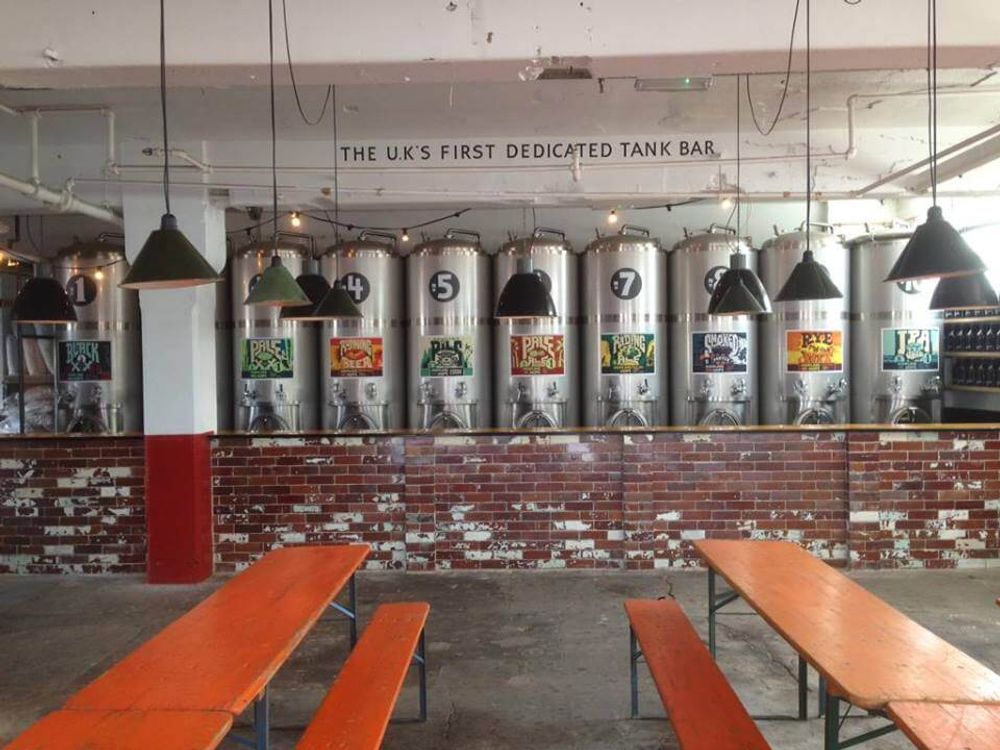
The Jarr team had to learn how to brew kombucha in different conditions – including being in the middle of a nightclub venue
Lastly, bottling and packaging your own product sounds like you’re in control, which is true to a certain extent, but we were doing it in a nightclub. Our carbonation tanks and bottling room were smack dab in the middle of Mick’s Garage, which in its later years evolved from the working warehouse and wholesome kombucha taproom and food hall, into one of East London’s best known underground techno venues.
Imagine 500 people raving in your brewery Friday, Saturday and Sunday. Come Monday morning, we’d move the speakers, laser lights and smoke machine, sweep and mop the 10,000 square foot floor; then jump right back into brewing and bottling kombucha.
My Business Advice? Make Granola bars. Just stick with the granola bars.
Lesson: COVID was not CUPID: Lockdown
Oh to be Jeff Bezos: Unless you’re Jeff Bezos or Ocado, Covid has been a horror show for business. Thirty to forty per cent of our Jarr business goes through cafes, restaurants, bars and pubs, so we’ve definitely taken a massive hit, and our hearts go out especially to all of our friends, customers and fellow producers in the hospitality sector. We have been lucky in having some key off-trade and online stockists who seem to have had good increments in sales (Whole Foods Market, Planet Organic, Drydrinker, Farmdrop and our own website).
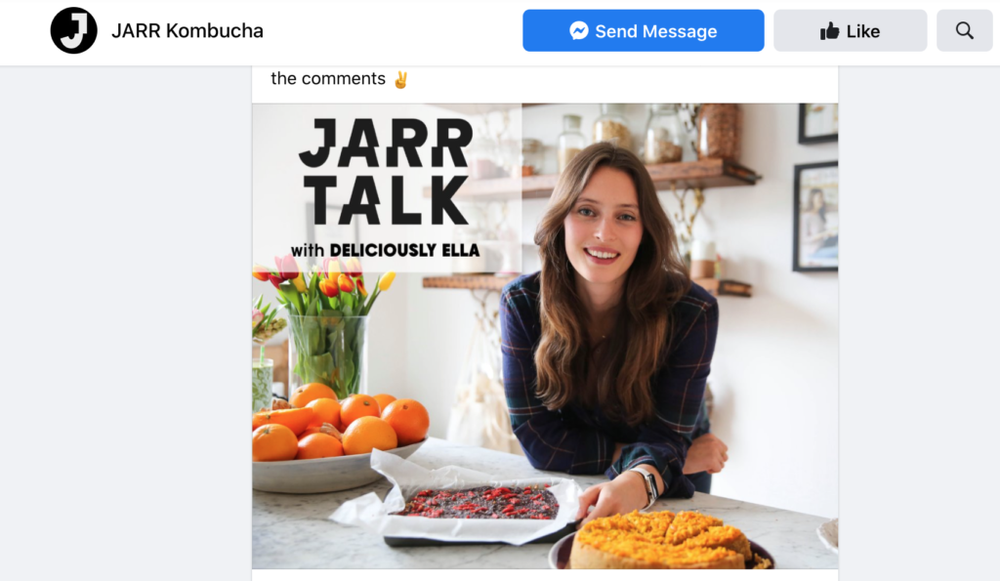
Jarr Tak is a new Instagram Live series Vanni has started during lockdown
If anything good has come out of this though, it is that everyone has learned new ways of working and communicating. Whether that’s turning your bar into an off licence-meets-grocery story, connecting with industry friends on Instagram Live chats, or investing in and increasing e-commerce sales, we’ve all had to evolve and adapt to our circumstances. We did this with a series of Instagram chats we called Jarr Talk where I interviewed industry friends such as Deliciously Ella, Alex Kratena, Douglas McMaster and Professor Tim Spector just to name a few.
In a lot of ways, this lockdown is almost more devastating and exhausting than the last, with businesses struggling to maintain the energy and enthusiasm to keep afloat. But I am amazed by the levels of positivity and believe the industry will bounce back once the vaccine is rolled out.
The on-trade’s future? I think the on-trade is going to come back stronger and more energised than ever before. My hope (and belief) is that we will all, even for just a short period of time, not take life for granted and begin to enjoy the simple pleasures that we perhaps never gave much thought to. Personally, I recall going out for a meal with my partner after the first lockdown, in that short window of freedom. We went to a mediocre local Italian restaurant, but that penne arabiatta and panna cotta coupled with the buzz and energy of being around others made it one of the most enjoyable meals and evenings in recent memory. It was really quite magical.
As humans, we thrive off novelty; it’s what inspires us in many ways, and I think with a palpable level of collective novelty in our near future, with the warmth of the British summer sun approaching, we’re all going to enjoy life just that little bit more. And the on-trade will respond to that positivity. Perhaps this actually is what some are calling the Great Re-Set. Maybe this is what we needed to rediscover the subtle beauty of life happening all around us; and to not take its present or its future for granted.
Lesson: Distribution is Key. Export
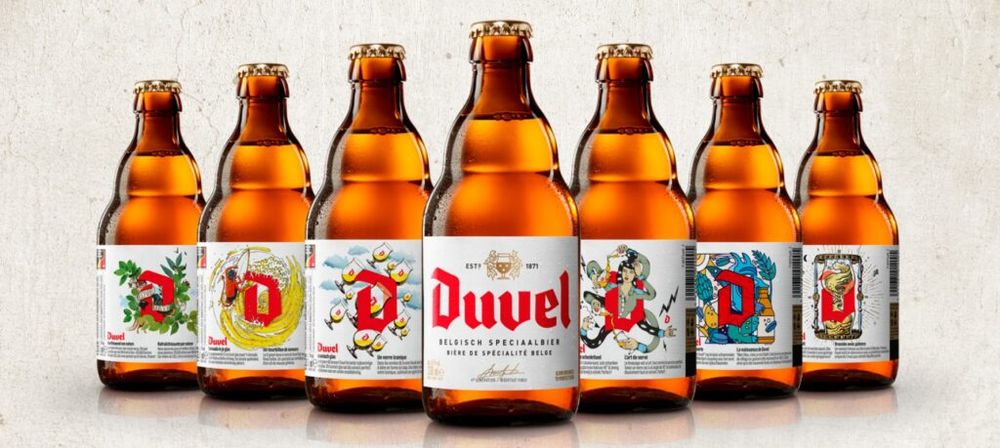
Jarr’s breakthrough has prompted the interest of Belgium brewing giant Duvel
Regarding export, in 2018 we sold a majority share to Belgian brewers Duvel Moortgat. They are known as one of the most prestigious brewers in Europe, if not the world. It was a strategic partnership in many ways – Duvel had seen an increased level of demand for low and no alcohol, and at Jarr we were looking to expand beyond the UK, where the kombucha space is becoming overcrowded.
By building a brewery in Belgium (Belgians are specialists in naturally soured beers) and tapping into Duvel’s international sales and logistics networks – Jarr will soon be available across many countries, starting with Belgium, Portugal, France, Spain, the Netherlands, Czech Republic, Greece, Malta, Iceland and many others. As Duvel’s expertise is particularly in the on-trade, that’s where we will begin – offering Jarr as a complex, non-alcoholic adult soft drink that pairs exceptionally well with meals. From there, we will hopefully expand into the off-trade.
Lesson: Establishing a new category takes time: Kombucha lists in restaurants, next up?
How do bars and restaurant view kombucha? As a kombucha brand, we’re fortunate to be riding the wave of no and lo alcohol. Bars and restaurants, at least in London, are expected to have a decent selection of alcohol-free options. With our distinctly sharp and complex flavour profile, mixed with our premium minimalist branding, our bottles sit nicely on both a menu and a dining table. Over lockdown, we’ve actually received more interest from restaurants than ever before, from all across the country. Everyone is eagerly anticipating the end of all of this madness and prepping their summer menus and Jarr is hopefully going to end up on many of them. Hell, we might even start a rage for kombucha cocktails as well, both Alco free or the real McCoy.
- To find our more about Jarr and its range of drinks go to its website here.































